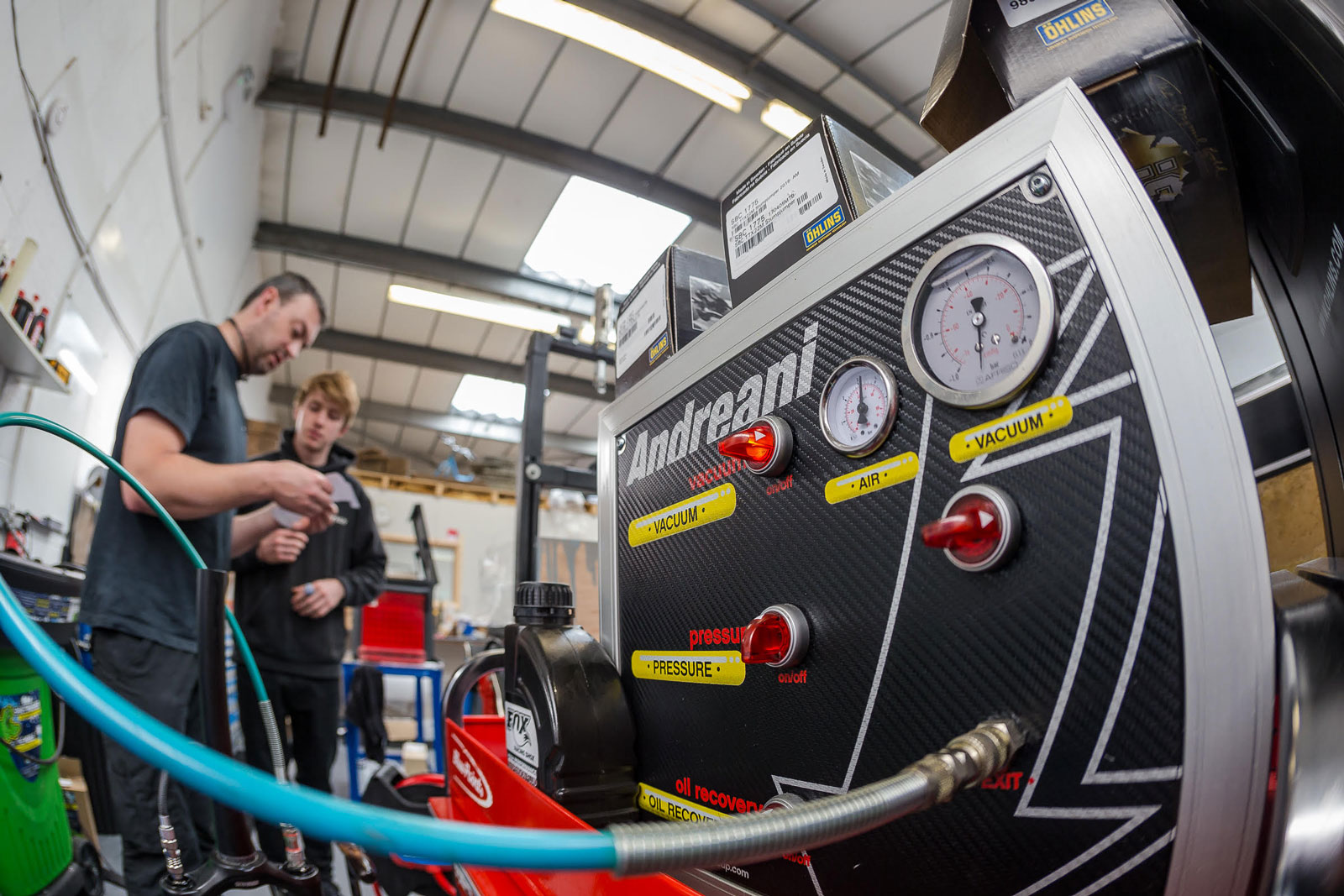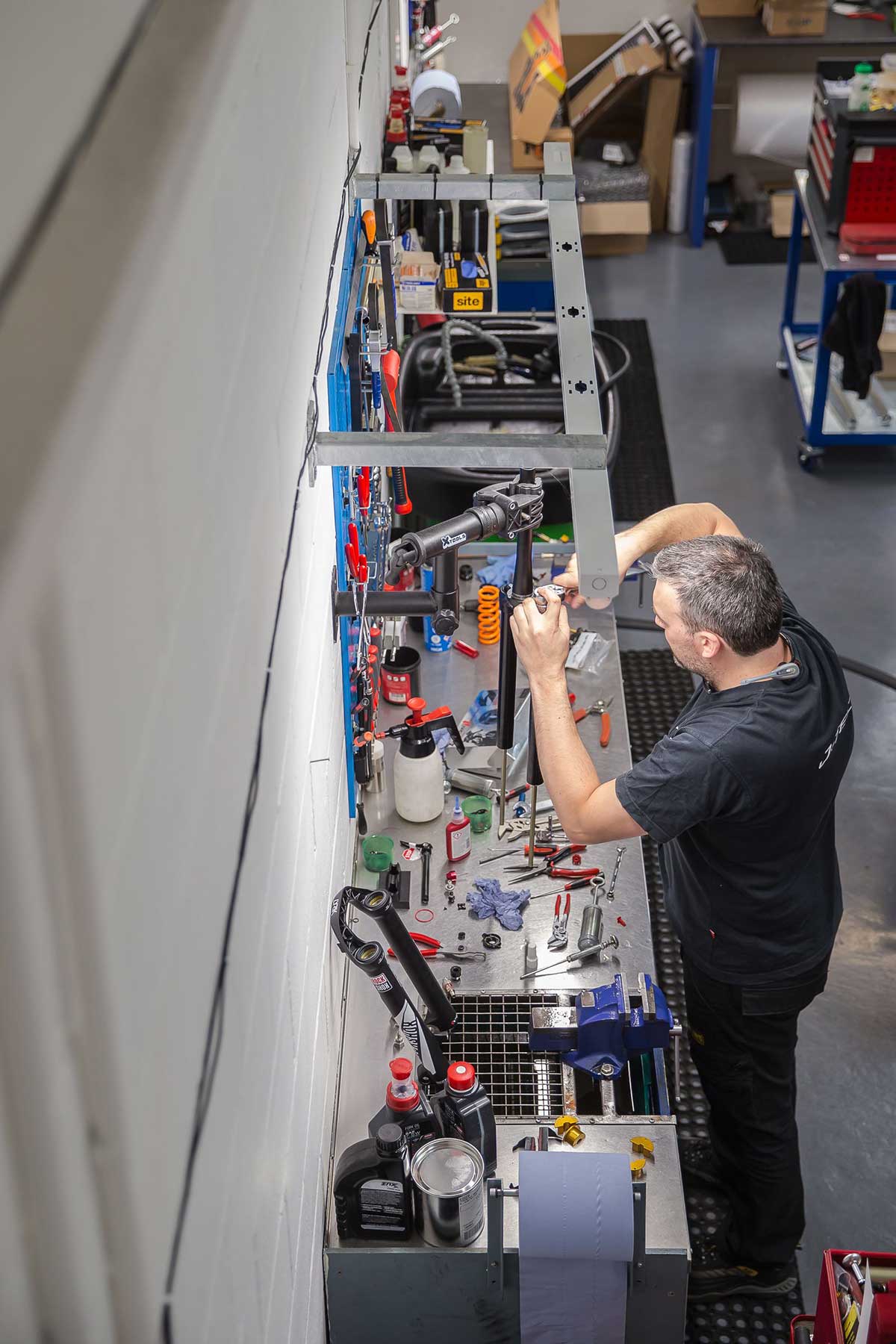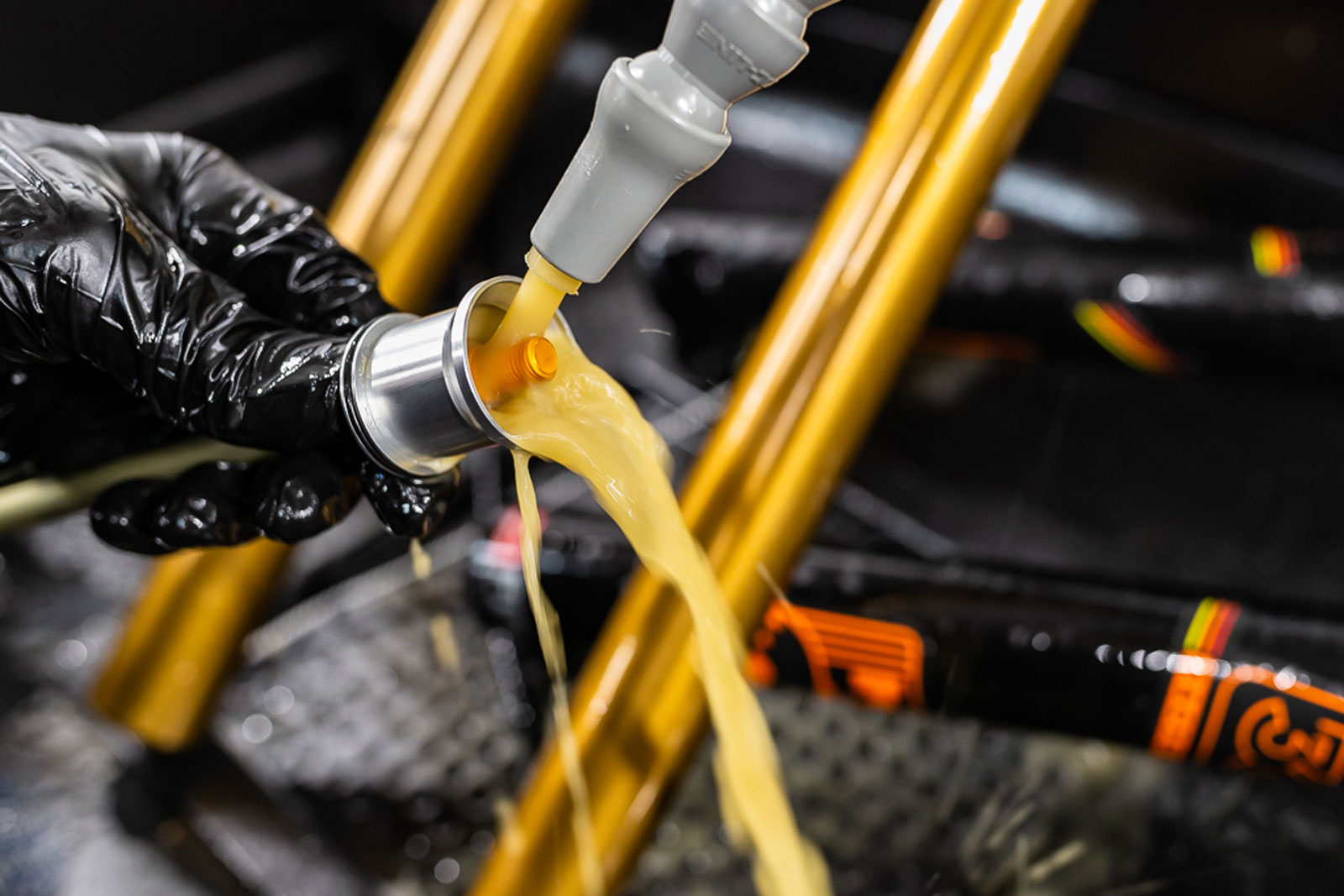We know, there’s no such thing as a stupid question. But there are some questions you might not want to ask your local shop or riding buddies. AASQ is our weekly series where we get to the bottom of your questions – serious or otherwise. Hit the link at the bottom of the post to submit your own question.
Welcome back to the Bikerumor Ask A Stupid Question series. Ever wondered what your shock or fork might feel like when it needs a damper service? Or what custom tuning options you have from the comfort of your own home? We asked these questions and more to custom suspension tuners and service technicians from across the mountain bike industry. Joining us this week are:
- James Williams , Owner of JTech Suspension
- Finlay Paton of Full Factory Suspension
- William Angle, Owner of Trail Labs LLC
What does a shock feel like when it needs a damper service?
JTech Suspension: Servicing should always be done by the manufacturer’s service interval, not just when it feels different. If it does feel different within the service interval, then something has likely gone wrong and it’s best to get it looked at straight away by a professional. A service is to preserve the shock’s wearing surfaces and keep performance. If left too long, you’ll just wear your shock out and likely be faced with a large bill to pay for lots of additional parts!
Full Factory Suspension: You will loose damping control – it will speed up. You will have a mushy pedaling platform (some would call it lockout, but it doesn’t fully lock out). It may also be really noisy in use. This all points to the fact that it’s time for a service.
Trail Labs: Shocks might feel absolutely fine when it’s time for the damper to be serviced. We advise customers to follow the manufacturer’s service intervals for full rebuilds. This varies by brand and is generally 100-200 hours of riding, or one year. Riders should view this as preventative maintenance to keep their suspension components running properly, and to last longer. When a damper has failed you may notice it feels like a pogo stick during compression and rebound, meaning it acts like a spring with no control. You may also hear some sloshing or slurping noises, though it varies by design.
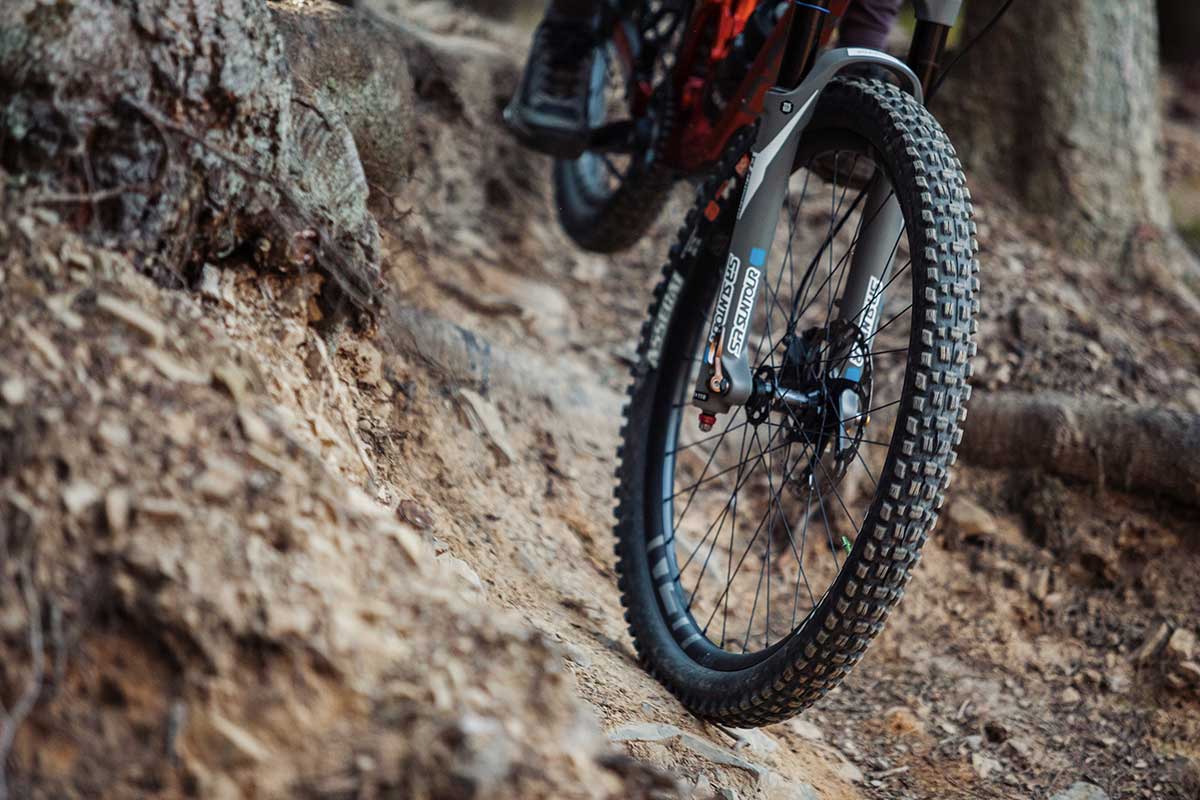
What is the most common custom tune you get asked to do?
Full Factory Suspension: Usually just more tokens into the air chamber, but that’s not what I would call a “custom tune”. I do quite a few shim stack tunes where I am often increasing the high speed rebound control (slowing it down) for heavier riders and reducing both compression and rebound for a light rider. We also convert FOX Float X2 air shocks to Coil as it costs half the price of a new coil unit.

Trail Labs: The most common tune we get asked about is converting a FOX DPX2 to the Ibis Ripley Traction Tune. This is a very popular conversion for riders looking for a stronger shock on their Ripley. Once FOX and Ibis figure out the new Float X setup we’ll likely start converting those for customers.
JTech Suspension: Hard to say really, it’s probably an equal split between people wanting more support or less harshness and across all brands too. We do get a lot of requests to make a very basic fork perform like a high end fork, which can be a challenge!
What can a rider do themselves, at home, to change the tune of their shock or fork damper, without voiding the warranty?
Trail Labs: The most common form of DIY tuning is with the spring air volume. Many forks and shocks have volume tokens, or rings, which allows the user to reduce and increase air volume. Changing the air volume, within the manufacturer’s specifications, will not void the warranty and helps the rider achieve different performance out of their suspension.
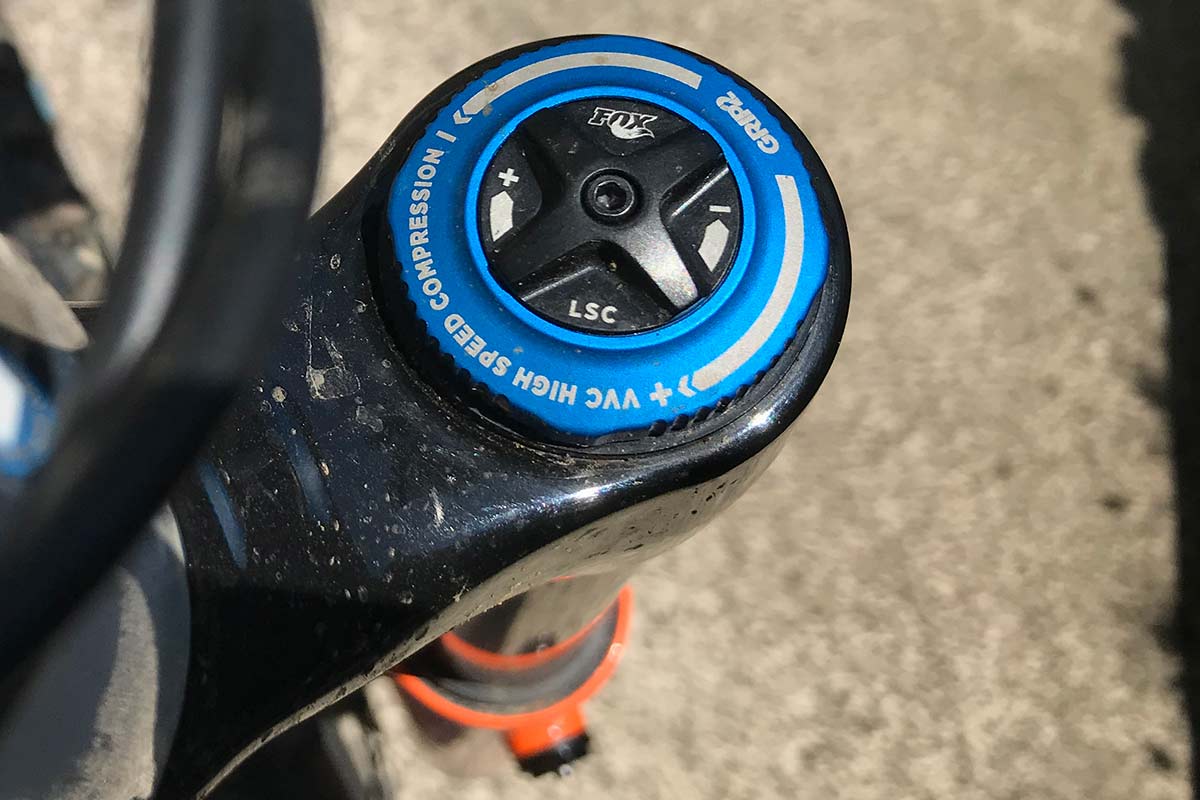
The other DIY option that most suspension products support is damping adjusters, in the form of dials, which controls compression and rebound rates. Once you figure out the proper air pressure, or spring rate, for your riding weight to achieve correct sag then you should use the damping adjusters to dial in how the suspension handles. Most users should probably stay away from trying to convert something inside the damping systems, and always follow the manufacturer’s specifications when rebuilding suspension.
JTech Suspension: Nothing really, depending on the specific manufacturer’s warranty policy. However, the basics are fundamental to performance and so many people get caught up in the technical tuning, that they miss the basics. Friction is the biggest enemy to suspension performance. Tight pivots, tight bushings, dry seals, poor quality/degraded/contaminated oils will all cause more friction.
This friction will completely mask any performance gains you make by tuning a damper. The best thing you can do at home is do a basic service with good quality oils and greases, making sure that every pivoting/sliding part is as free as possible. Then let the professionals tune your damper.
Full Factory Suspension: You can do the air volume, no problem, any more than that and you’ll need to invest in the correct tooling, this is usually the biggest hurdle.
If you can wield a spanner pretty well, you can probably do an air can service, but even that has its little pit falls and things to look out for – such as damaging the rings between the positive and negative chambers (the shock will hold air fine, but it will just drop through the travel really easily).
The main thing I would advise is take your time. Don’t get distracted, and clean the shock or fork really thoroughly before you start. Clean your working space before you start and lay all the parts out in the order you took them off. The biggest mistake people make is to get dirt inside the air chamber. This will damage the shock or fork in the long term.
Got a question of your own? Click here to use the Ask A Stupid Question form to submit questions on any cycling-related topic of your choice, and we’ll get the experts to answer them for you!

